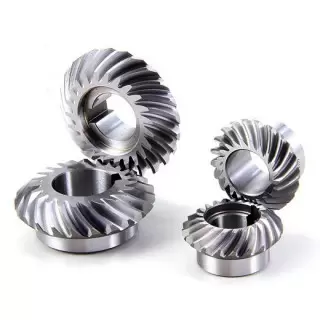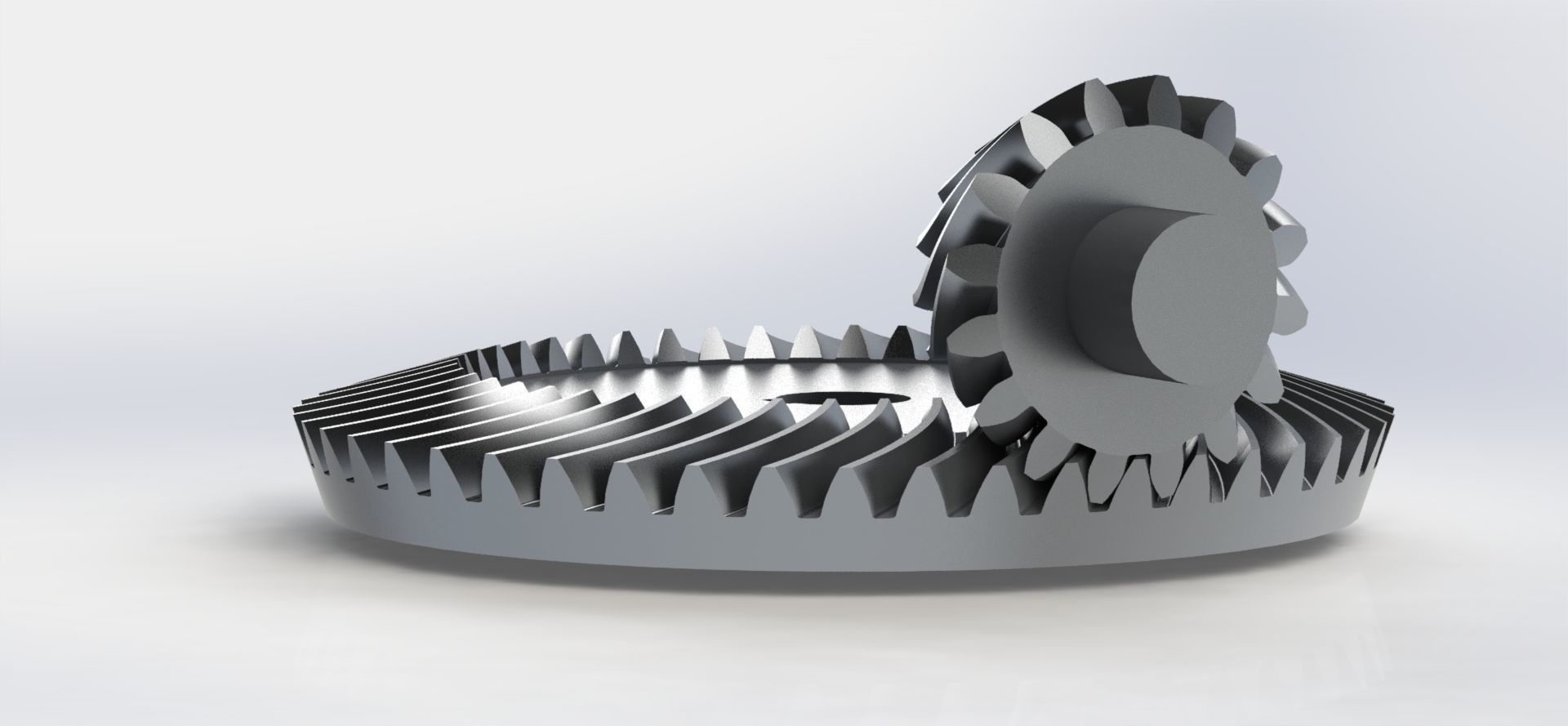Product Description
Customer High Precision Manufacturer Steel /Pinion/Straight/Helical Spur
Planetary/Transmission/Starter/ CNC machining/Drive Gear
Our advantage:
*Specialization in CNC formulations of high precision and quality
*Independent quality control department
*Control plan and process flow sheet for each batch
*Quality control in all whole production
*Meeting demands even for very small quantities or single units
*Short delivery times
*Online orders and production progress monitoring
*Excellent price-quality ratio
*Absolute confidentiality
*Various materials (stainless steel, iron, brass, aluminum, titanium, special steels, industrial plastics)
*Manufacturing of complex components of 1 – 1000mm.
Production machine:
| Specification | Material | Hardness |
| Z13 | Steel | HRC35-40 |
| Z16 | Steel | HRC35-40 |
| Z18 | Steel | HRC35-40 |
| Z20 | Steel | HRC35-40 |
| Z26 | Steel | HRC35-40 |
| Z28 | Steel | HRC35-40 |
| Custom dimensions according to drawings | Steel | HRC35-40 |
Production machine:
Inspection equipment :
Gear tester
| Application: | Motor, Electric Cars, Motorcycle, Machinery, Agricultural Machinery, Car |
|---|---|
| Hardness: | Hardened Tooth Surface |
| Gear Position: | Internal Gear |
| Manufacturing Method: | Rolling Gear |
| Toothed Portion Shape: | Spur Gear |
| Material: | Steel |
| Customization: |
Available
| Customized Request |
|---|

What lubrication and maintenance practices are required for spiral gears?
Spiral gears require proper lubrication and maintenance to ensure optimal performance and longevity. Here are the recommended lubrication and maintenance practices for spiral gears:
- Lubrication: Adequate lubrication is essential for smooth gear operation and to minimize wear. The lubricant forms a protective film between the gear teeth, reducing friction and preventing metal-to-metal contact. It is crucial to use a lubricant that is compatible with the gear material, operating conditions, and load requirements. Regular lubrication intervals should be followed, and the lubricant should be replenished as needed.
- Lubricant Selection: The selection of the lubricant depends on various factors such as gear speed, load, temperature, and environment. It is recommended to consult the gear manufacturer or lubrication experts to determine the most suitable lubricant for the specific application. The lubricant should have appropriate viscosity, additives, and temperature resistance to provide effective lubrication and protect against wear and corrosion.
- Lubricant Application: The lubricant should be applied evenly to the gear teeth and mating surfaces. Depending on the gear design and accessibility, lubrication can be done through oil bath immersion, oil splash, forced circulation, or grease application. It is important to follow the gear manufacturer’s guidelines or industry best practices for proper lubricant application.
- Monitoring and Inspection: Regular monitoring and inspection of the gear condition are essential for early detection of any abnormalities or signs of wear. This can include visual inspections, checking for unusual noise or vibrations, and measuring gear backlash and tooth wear. Monitoring can help identify potential issues and allow for timely maintenance or lubricant adjustments before significant damage occurs.
- Cleaning and Contaminant Control: Regular cleaning of the gears and their surrounding areas is necessary to remove dirt, debris, and contaminants that can affect gear performance and lubrication. Contaminants can accelerate wear and cause damage to the gear teeth. Proper sealing and contamination control measures should be implemented to minimize the ingress of contaminants into the gear system.
- Maintenance Schedule: Establishing a maintenance schedule is important to ensure timely lubricant replenishment, gear inspections, and necessary repairs or replacements. The maintenance schedule should consider the operating conditions, gear load, and manufacturer’s recommendations. Adhering to a well-planned maintenance schedule helps prolong the service life of spiral gears and ensures their continued performance.
By following these lubrication and maintenance practices, spiral gears can maintain their efficiency, durability, and reliability over time. Regular attention to lubrication, monitoring, and maintenance contributes to the smooth operation and extended lifespan of spiral gears in various applications.

Can spiral gears be used in precision machinery and equipment?
Yes, spiral gears can be used in precision machinery and equipment with excellent results. They offer several advantages that make them well-suited for such applications. Here’s why spiral gears are suitable for precision machinery and equipment:
- Smooth Operation: Spiral gears provide smooth and precise gear operation. The helical tooth arrangement ensures gradual tooth engagement, resulting in reduced impact, vibration, and noise. This smooth operation is crucial in precision machinery where precise movements and low noise levels are required.
- High Load Capacity: Spiral gears have a high load-carrying capacity, allowing them to handle heavy loads encountered in precision machinery. The helical tooth profile distributes the load across multiple teeth, reducing stress concentration. This feature enables spiral gears to transmit torque efficiently and withstand the forces associated with precision applications.
- Efficient Power Transmission: Spiral gears offer efficient power transmission, minimizing energy losses and optimizing overall system efficiency. The helical tooth profile reduces sliding friction, resulting in improved power transmission efficiency. This efficiency is particularly important in precision machinery where energy conservation and high performance are critical.
- Reduced Noise and Vibration: Spiral gears exhibit reduced noise and vibration due to their gradual tooth engagement and improved contact pattern. This feature is highly desirable in precision machinery, where noise reduction is essential for maintaining a quiet working environment and ensuring accurate operation.
- Axial Thrust Compensation: Spiral gears can be designed with opposite helix angles on mating gears to cancel out axial thrust. This axial thrust compensation simplifies gear design and reduces the need for additional components such as thrust bearings. It is particularly advantageous in precision machinery, where precise axial movement and minimal axial forces are desired.
- Reliability and Durability: Spiral gears are known for their reliability and durability. The gradual tooth engagement, load distribution, and reduced friction contribute to their long-term performance under demanding conditions. Precision machinery requires gears that can withstand continuous use and maintain high precision over time, making spiral gears a suitable choice.
Considering their smooth operation, high load capacity, efficient power transmission, noise reduction, axial thrust compensation, reliability, and durability, spiral gears are well-suited for precision machinery and equipment. They can contribute to the overall performance, accuracy, and longevity of precision systems.

What is the purpose of using spiral gears in mechanical systems?
Spiral gears, also known as helical gears, serve several important purposes in mechanical systems. Their unique design and characteristics make them suitable for various applications. Here are some key purposes of using spiral gears:
- Smooth and Quiet Operation: The helical tooth arrangement in spiral gears enables gradual tooth engagement, resulting in smoother and quieter operation compared to straight-cut gears. This makes them ideal for applications where noise reduction and smooth motion are essential.
- High Load Capacity: Spiral gears can handle higher loads due to the helical tooth design. The load is distributed over multiple teeth, allowing for increased load-carrying capacity and improved strength. This makes spiral gears well-suited for heavy-duty applications that require the transmission of high torque or the handling of significant loads.
- Efficient Power Transmission: The helical tooth arrangement in spiral gears helps minimize sliding friction between the teeth. As a result, spiral gears exhibit higher efficiency compared to straight-cut gears, as there are reduced power losses due to friction during gear operation. This efficiency is crucial in applications where power transmission needs to be optimized and energy losses minimized.
- Axial Thrust Compensation: Spiral gears can be designed with opposite helix angles on mating gears, which helps cancel out the axial thrust generated during gear meshing. This feature eliminates the need for additional thrust bearings, simplifying the gear design and reducing complexity.
- Versatility and Adaptability: Spiral gears can be manufactured in various configurations, including spur, helical, and double helical designs. This versatility allows for their application in a wide range of mechanical systems, including gearboxes, automotive differentials, machine tools, and industrial machinery. Their adaptability and compatibility with different gear types make them valuable components in various applications.
The purpose of using spiral gears in mechanical systems is to achieve smooth, efficient, and reliable motion transmission while handling high loads and providing noise reduction. Their unique design features make them a preferred choice in many applications where these characteristics are essential.


editor by CX 2023-10-26